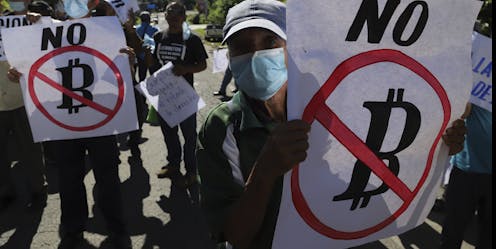What is Bitcoin's fundamental value? That's a good question
- Written by John Hawkins, Senior Lecturer, Canberra School of Politics, Economics and Society and NATSEM, University of Canberra
 Salvador Melendez/AP
Salvador Melendez/APAs it hits new highs, there is no shortage of bold predictions about Bitcoin reaching US$100,000 or more.
Often these are based on not much more than extrapolations by people with vested interests: the price has gone up a lot so it will keep going up. If it gets above its previous high, it must keep going up.
There is also...
Read more: What is Bitcoin's fundamental value? That's a good question

















